If you are familiar with containers or containerization, You might be familiar with Docker. We can now use Docker in multiple ways. This blog will use Docker in GUI(Graphical User Interface).
Docker Desktop
Docker Desktop is available for Windows, MAC, and Linux. We will be using Docker Desktop on MAC with apple chip in this blog.
Installing Docker Desktop.
1) First, visit https://www.docker.com/products/docker-desktop/ and select your compatible option.
2) Here, we will be selecting Mac with Apple Chip. Now, You can see a dmg file being downloaded.
3) Open the dmg file and install docker.
4) Now, You will be greeted by Docker Desktop home page.
Your Docker Desktop Installation is completed. It was easy to install the application. Now, let's explore this application and see what can be done.
What does it Include?
Docker for desktop includes
- Docker Engine
- Docker CLI client
- Docker Compose
- Docker Content Trust
- Kubernetes
- Credential Helpers
Creating K8s Cluster with Docker For Desktop
1) First, You click on the gear icon on the top right, as shown in the image
2) Once you click it, you can see the Preferences tab.
3) Now, Click on Kubernetes
4) You can see an option to enable it. After you select it, Apply & Restart
5) It prompts you for installation of k8s click install.
6) Once the installation is completed
You can now use Kubernetes with Docker for Desktop.
Now, I have minikube installed on my device already. Let's check what node is my k8s running. For this, open your terminal and enter the command.
kubectl get nodes
You can see,
Now, Let's change our node to docker-desktop
On the top right, you can see Docker icon,
Click on the icon, and the Kubernetes tab, select
docker-desktop
Now, use the command we did before
kubectl get nodes
You can see the node is changed to docker-desktop.




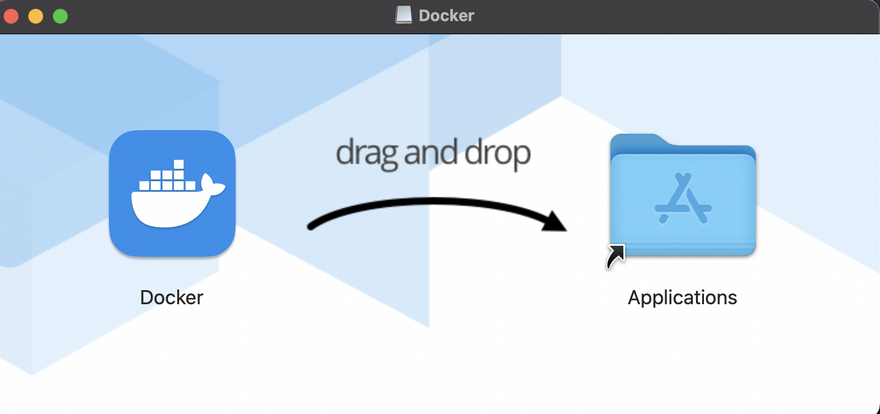
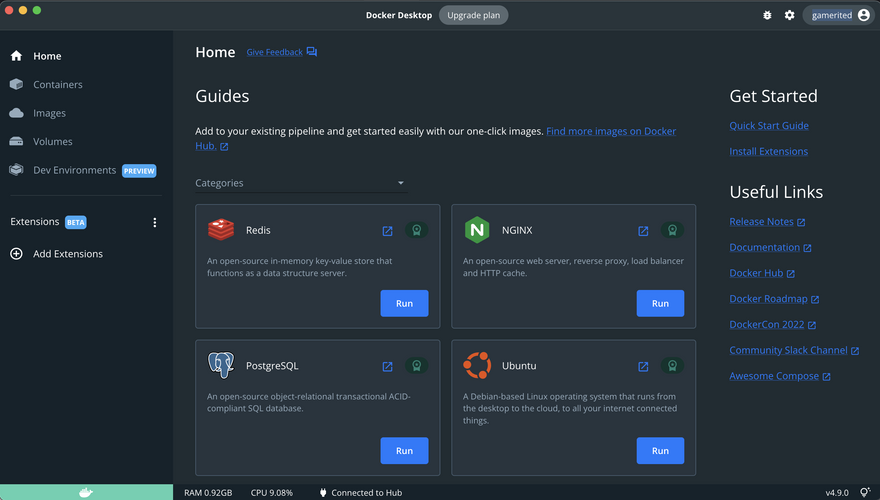
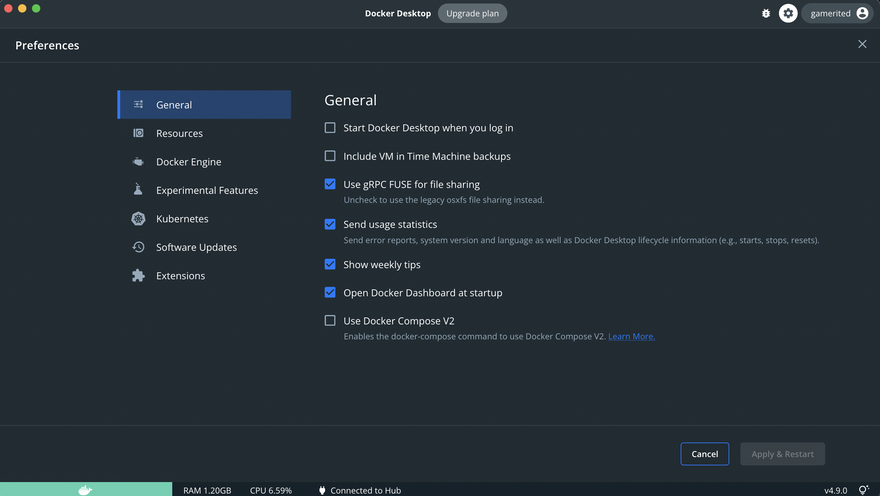
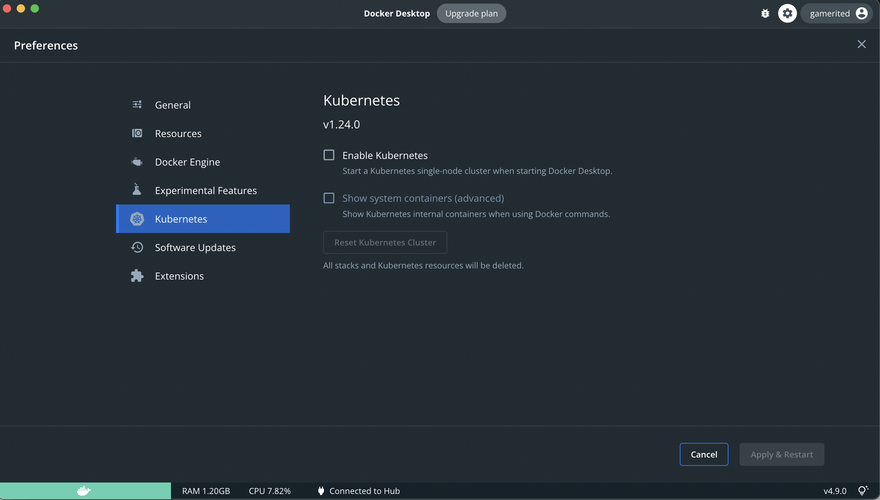
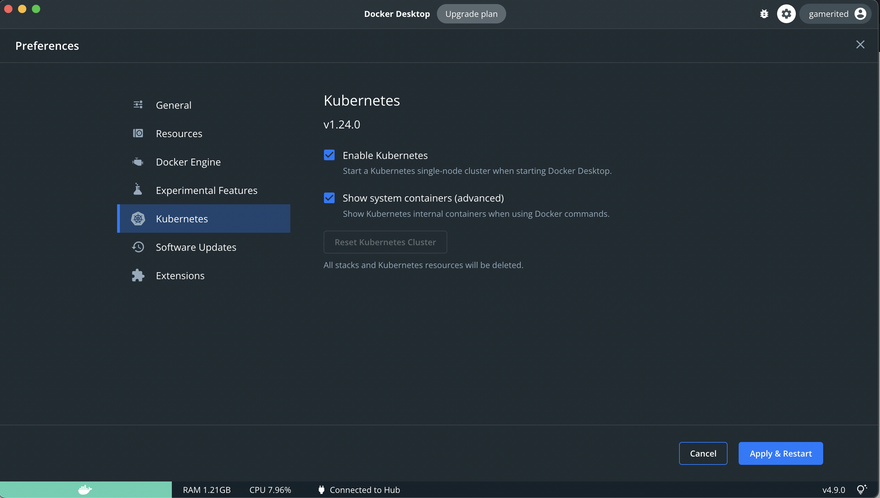
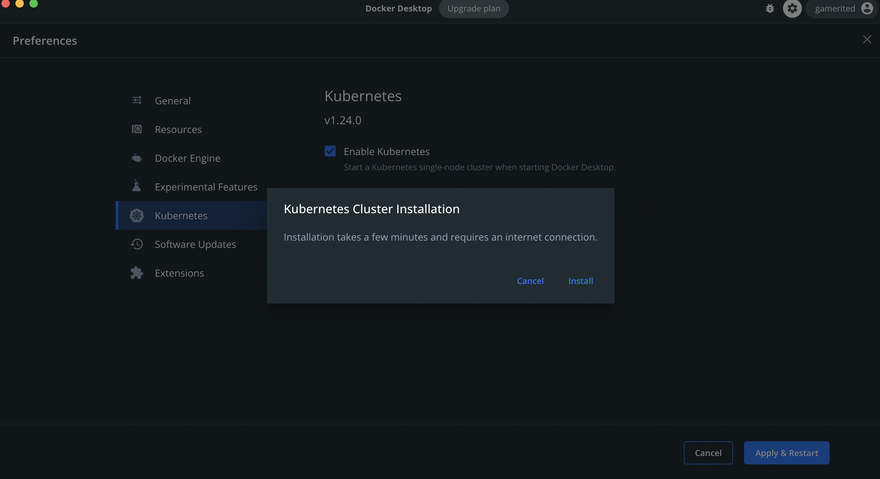
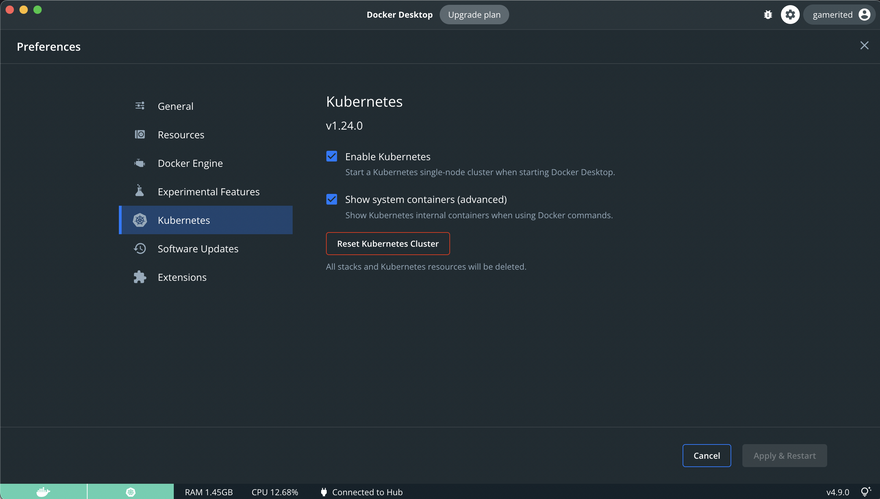

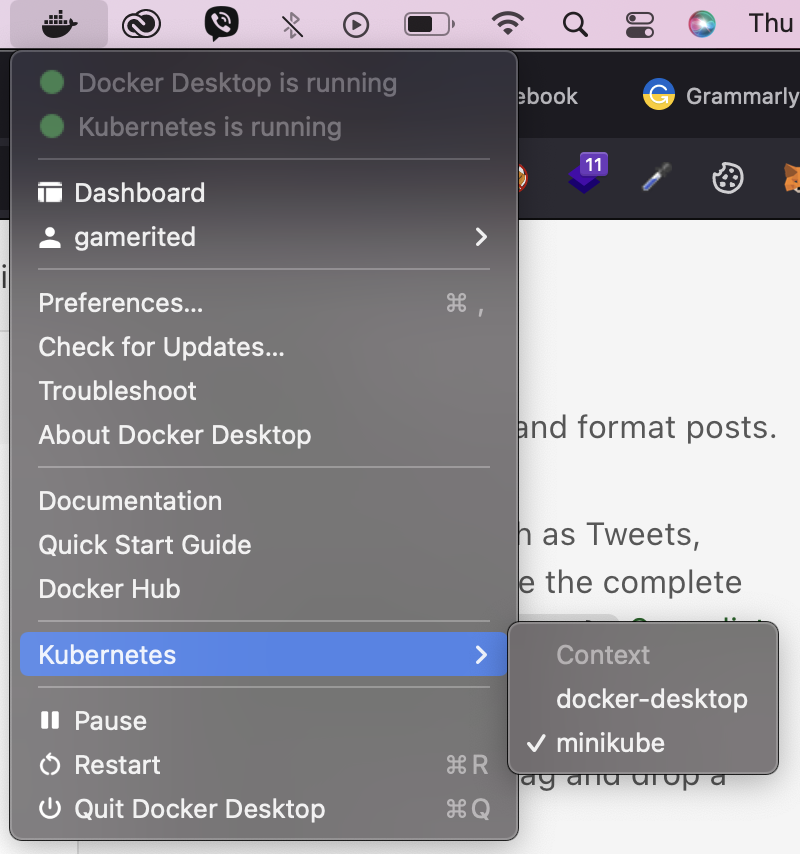



Top comments (0)